Hours: Thurs-Mon, noon-6 pm
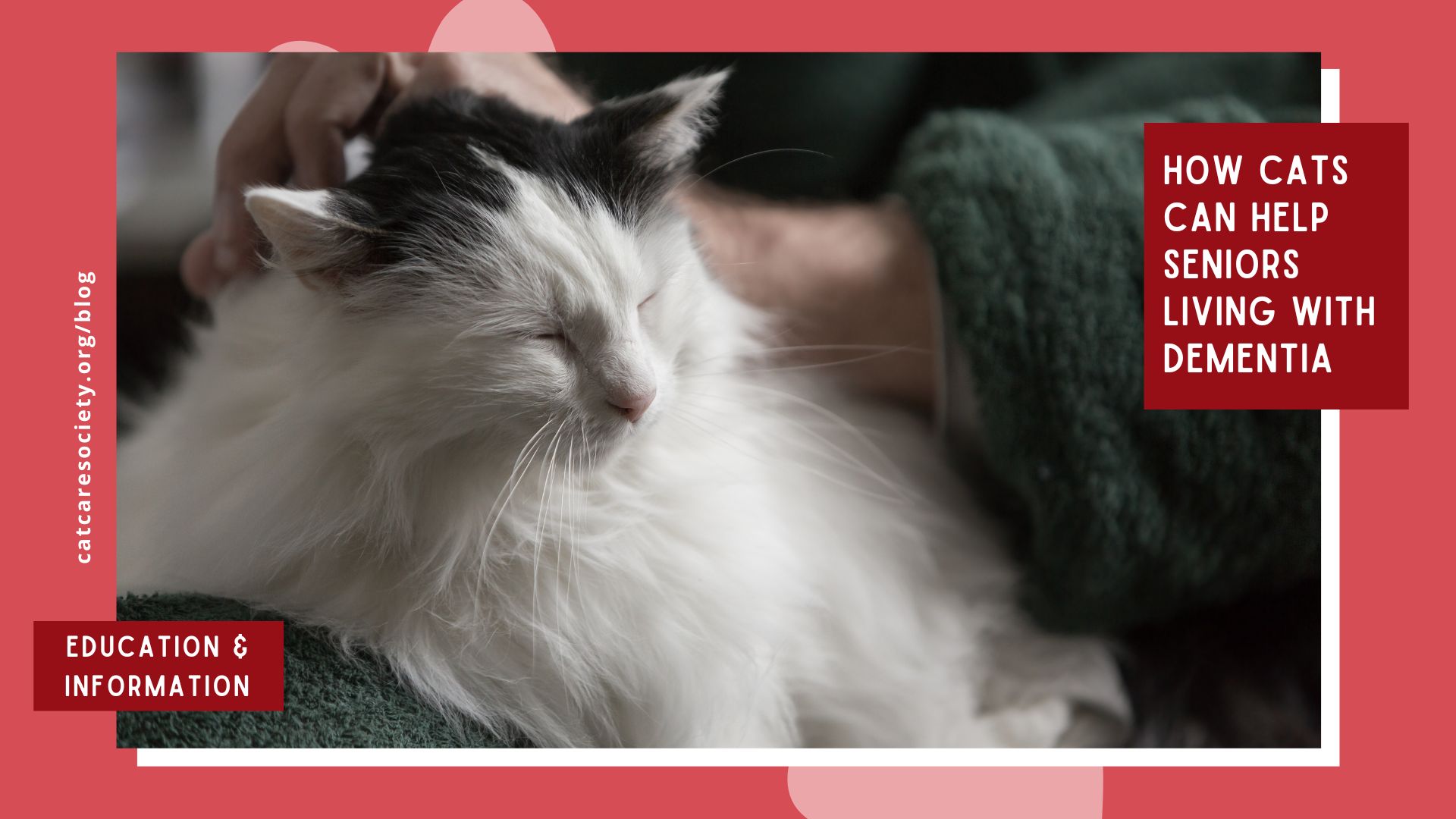
As our loved ones age and experience the challenges of dementia, it becomes increasingly important to find innovative ways to enhance their quality of life. One method that has gained recognition in recent years is cat ownership. Cats, with their gentle presence and calming nature, have been shown to have a profound therapeutic impact on seniors with dementia. Here, we will explore the specific benefits of cat ownership for seniors with dementia and discuss the considerations that come with introducing a feline companion into their lives.
Connecting with animals has long been recognized as a powerful form of therapy for people of all ages. When it comes to seniors with dementia, the benefits of cat ownership are particularly remarkable. Cats offer emotional support and companionship, reduce stress and anxiety, encourage physical activity, enhance social interaction, and even stimulate cognitive function.
The purring sound of a cat can have a calming effect on individuals, lowering blood pressure and reducing the risk of heart disease. The act of petting a cat can release endorphins, the body’s natural feel-good hormones, promoting a sense of well-being and relaxation. This physical interaction with a cat can also help improve motor skills and joint mobility in seniors, contributing to their overall physical health.
Furthermore, the responsibility of caring for a cat can provide a sense of purpose and routine for seniors with dementia, helping to maintain a structured daily schedule. The predictable nature of a cat’s behavior, combined with the warmth and comfort they provide, can create a stable and secure environment for seniors, reducing feelings of confusion and agitation. In essence, the bond between a senior and their cat can be a source of joy and comfort, enriching their quality of life in meaningful ways.
Let’s delve deeper into the specific benefits that cat ownership can bring to seniors living with dementia.
Seniors with dementia experience feelings of loneliness, isolation, and confusion. Cats, with their gentle and comforting nature, provide a constant source of companionship and emotional support. The unconditional love and presence of a feline friend can help alleviate feelings of sadness and fill the void that may have been left by a diminishing social circle.
Dementia is accompanied by heightened stress and anxiety levels, making it crucial to find effective ways to manage these emotions. Cat ownership has been shown to reduce stress and anxiety in seniors with dementia, as the act of petting a cat releases endorphins and promotes relaxation. The soothing rhythmic purring of a cat can have a tremendous calming effect, helping to alleviate tension and create a sense of tranquility.
Maintaining physical activity is vital for seniors with dementia, as it promotes overall well-being and can help delay the progression of cognitive decline. Cats, with their playful and curious nature, provide seniors with engaging stimulation and encourage movement. Activities such as interactive play sessions or simply chasing a laser pointer can help seniors stay active and enhance their physical health.
Social interaction is of paramount importance for seniors with dementia, as it helps combat feelings of loneliness and cognitive decline. Cats act as catalysts for social engagement, providing topics for conversation, and fostering connections between seniors and their caregivers, family members or fellow residents in care facilities. The shared joy and responsibility of cat ownership can create bonds that transcend the limitations of dementia.
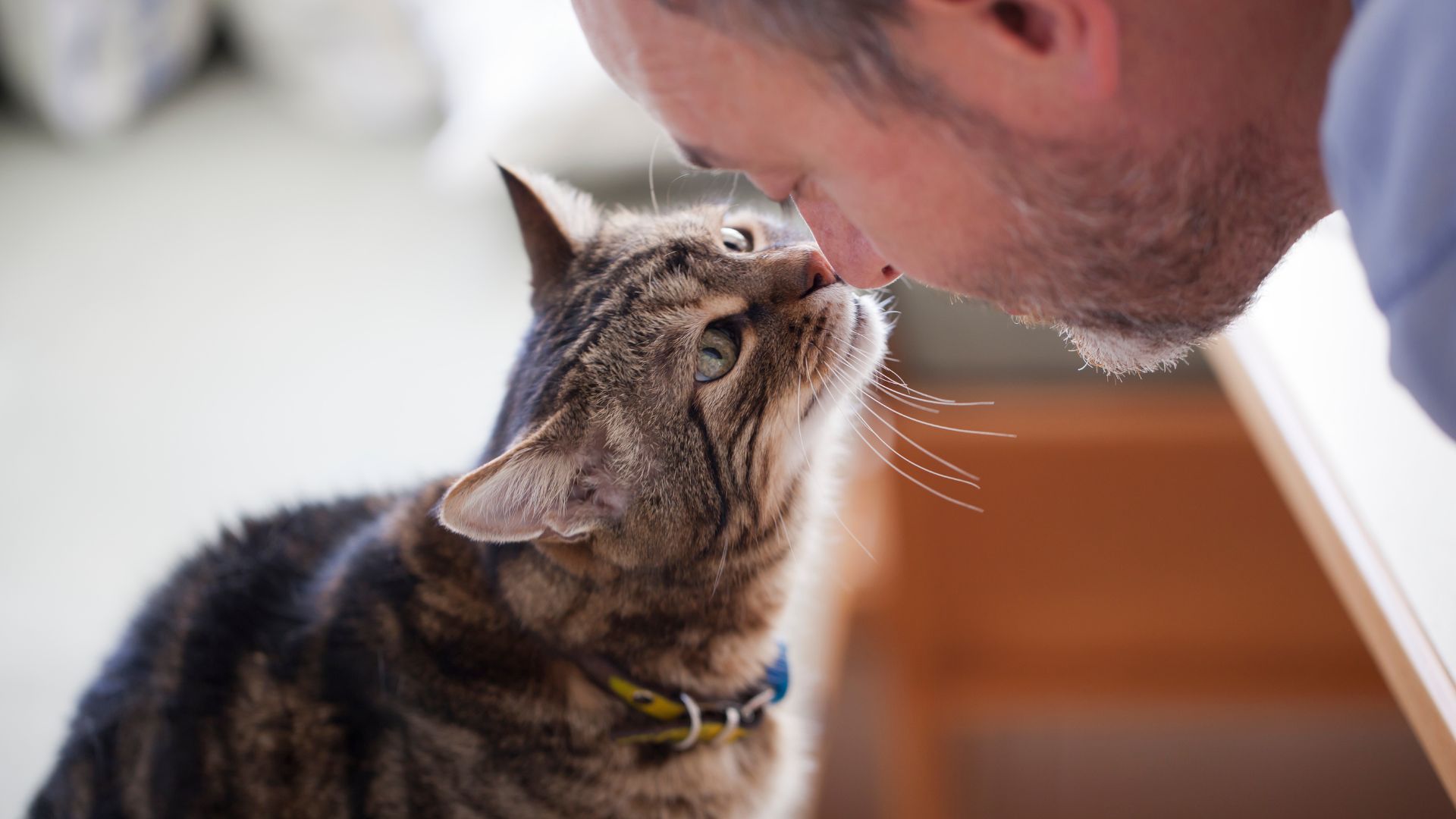
Dementia often leads to a decline in cognitive function, including memory loss and diminished problem-solving skills. Cats provide opportunities for mental stimulation and cognitive engagement. Feeding schedules, grooming routines and interactive play sessions with toys can help seniors exercise their cognitive abilities and keep their minds agile.
Moreover, the presence of a cat in a senior’s life can also have additional benefits that go beyond the direct impact on dementia symptoms. For instance, cats can serve as a source of entertainment and amusement, providing seniors with moments of joy and laughter. Watching a cat play or exhibit their quirky behaviors can bring a sense of delight and light-heartedness to a senior’s day.
While the benefits of cat ownership for seniors with dementia are abundant, it is essential to consider certain factors to ensure a safe and successful integration. Dementia can impact a person’s ability to care for a pet, so family members or caregivers must be prepared to take on the responsibility. Factors such as allergies, living arrangements and the temperament of the cat itself should also be carefully considered.
One important consideration is the age and energy level of the cat. Seniors with dementia may benefit from a cat that is calm, gentle and easy to handle. Older cats or breeds known for their relaxed demeanor, such as Ragdolls or Persians, may be well-suited for providing comfort and companionship to individuals with cognitive impairments. Additionally, it’s crucial to ensure that the cat is up to date on vaccinations and in good health to prevent any potential health risks to the senior.
Furthermore, creating a safe environment for both the senior and the cat is paramount. This includes removing any toxic plants or substances that could harm the cat and ensuring that the living space is free of small objects that the cat could ingest. Providing designated areas for the cat to rest, eat and use the litter box can help establish a routine that benefits both the pet and the senior. Additionally, regular veterinary check-ups and grooming sessions can contribute to the overall well-being of the cat and enhance the bond between the senior and their feline companion.
In conclusion, the therapeutic impact of cat ownership for seniors with dementia cannot be overstated. Cats offer a unique form of companionship and support that has been shown to improve the quality of life for individuals grappling with cognitive decline. From emotional comfort to physical stimulation and cognitive engagement, the benefits of having a feline companion extend far beyond simple pet ownership.
About the Author: Mary Anne Roberto is the co-founder of Always Home Connected and a dedicated CNA and PAC Certified Independent Consultant, specializing in dementia care. One of her goals is to create awareness about those experiencing cognitive changes and to provide caregivers with resources and tools that are necessary to help alleviate some of the challenges caregivers face on a day-to-day basis.
This post was authored and edited according to Cat Care Society’s editorial standards and style. Opinions expressed may not necessarily reflect that of CCS.
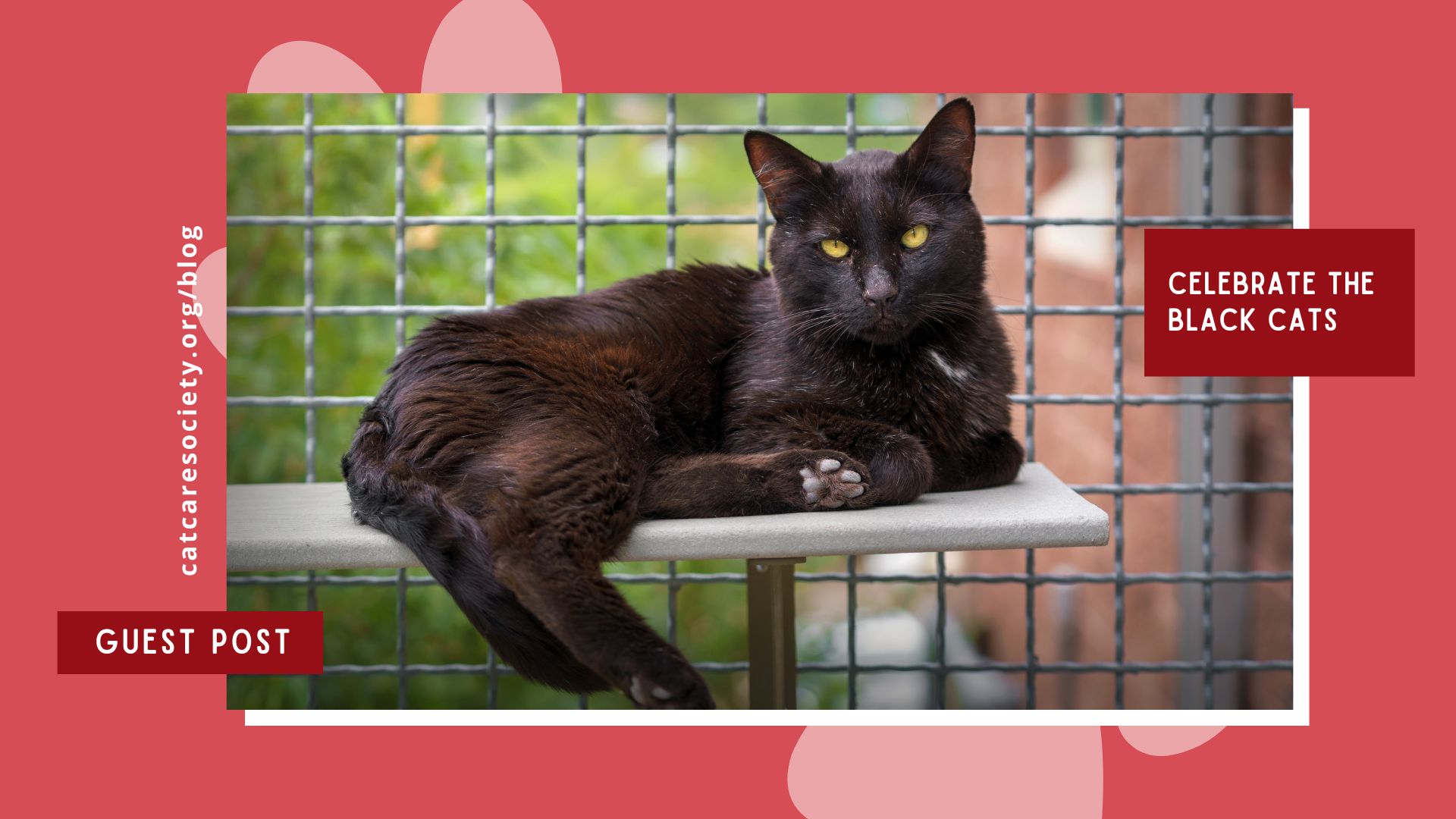
By Kathy McChesney, board member
I sit here now admiring the beauty of my latest “rescue” cat. Panther is one of our favorite cats, and he is solid black. Three of our cats are black, and they are all beautiful, delightful family members.
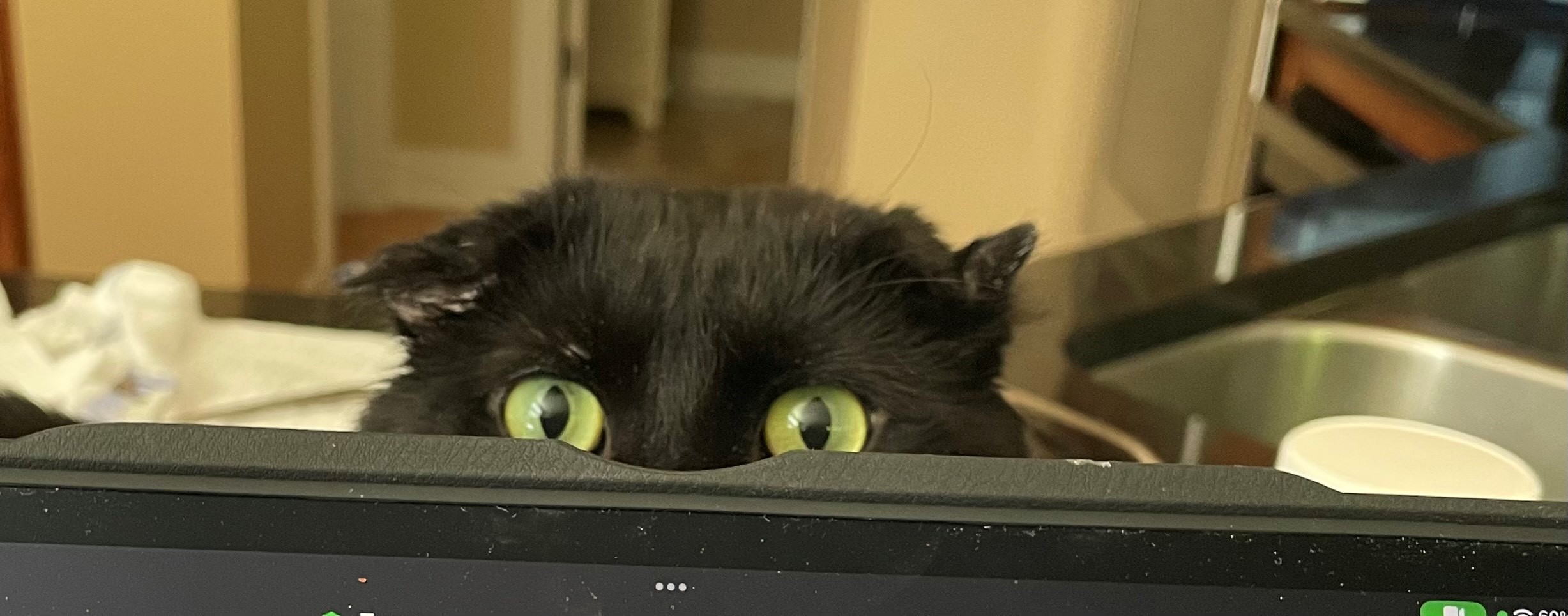
Why do we have so many black cats? I have always loved all cats, regardless of color, so I was surprised to learn that some people avoid taking in black cats. This fact first became apparent to me years ago in Texas when I found a litter of 12-week-old kittens, one of which was black. The multi-colored kittens were quickly adopted into good homes, but no one seemed to be interested in “Blackie.” We already had a house full, so I contacted a reputable cat shelter. I was surprised to hear that they would not take in a black kitten! They told me that black cats were simply too hard to place. It turned out to be my good fortune, as Blackie became a cherished addition to my family.
When I started my own cat rescue years later, I discovered that what I had been told was true. Black kittens and cats were far less likely to be adopted than others. We once took in a group of 20 kittens, born from feral cats. Within a couple of months, we found homes for 18, but were left with two sweet, adorable black kittens who are still with us today. While there is some dispute, the statistics do seem to support that my experience is the norm. See National Library of Medicine, Coat Color and Cat Outcomes in a US Urban Shelter, as well as The Truth About Black Cats.
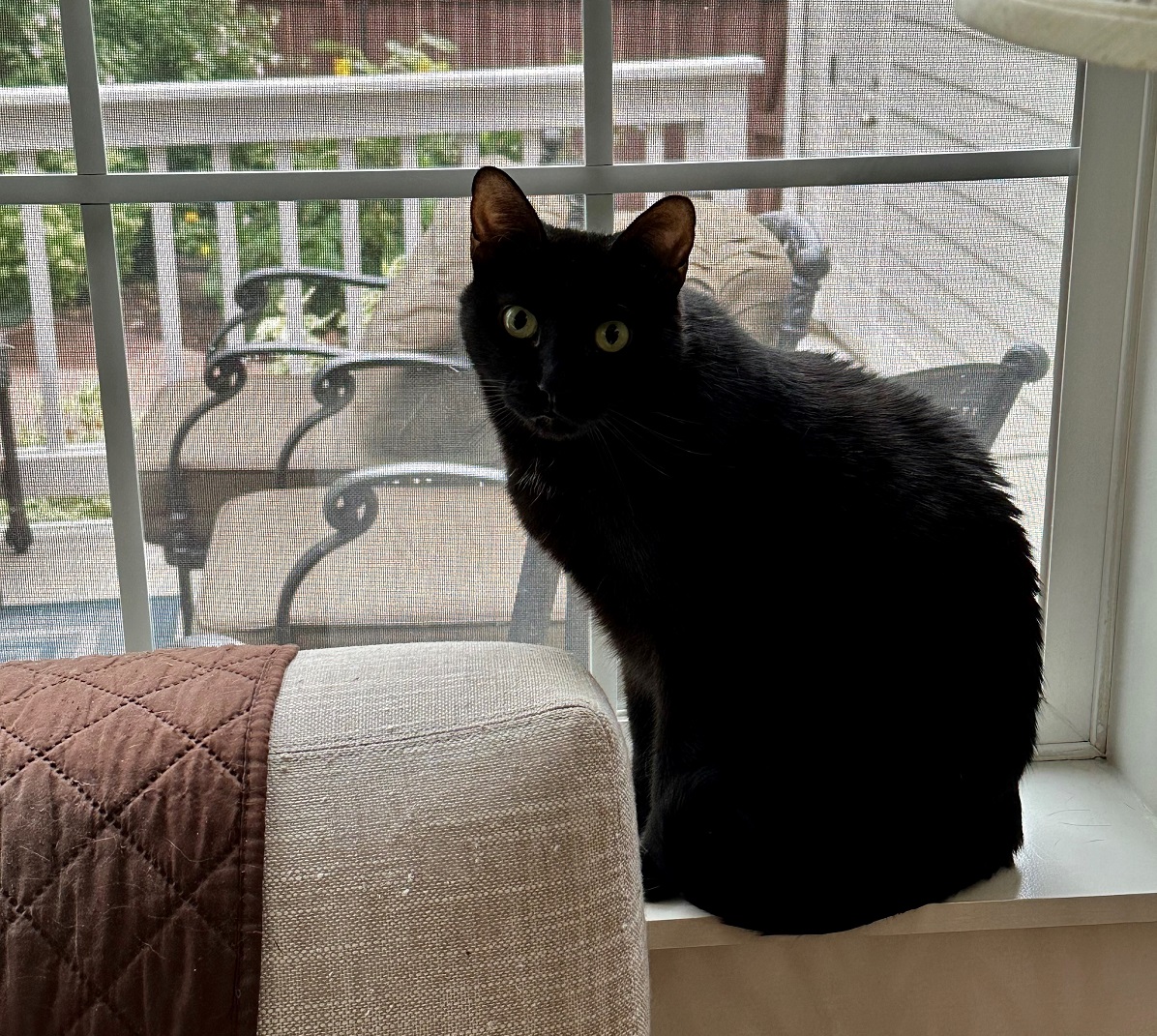
Why are black cats adopted less often than others? Apparently, many people, particularly those who tend to be superstitious, view black cats as more aggressive, less friendly and less adoptable than other cats. Studies reveal the bias stems from superstitions and difficulty of reading facial expressions of black cats.
Black cats are not scary. They are beautiful, sweet, sociable, playful and quite expressive. I can attest that my black cats have brought me nothing but good luck, love and joy.
October is Black Cat Awareness Month, so let’s all celebrate these special kitties! As part of our celebration at Cat Care Society, we will be offering reduced adoption fees on black cats and kittens. While you might have heard some myths creating fears of adopting out black cats during the Halloween season, research has shown that ceasing adoption of black cats during this time actually does more harm than good, because it increases their time in shelters.
There is zero evidence that placing black cats for adoption before Halloween puts them at risk.
The key to keeping cats safe is finding them good homes. Cat Care Society has a thorough adoption screening process to ensure that every cat — no matter what color — finds a safe and happy forever home.
So come to Cat Care Society and take advantage of the celebration! I promise that the addition of an ebony cat or kitten will bring you years of joy!
About the Author: Kathy McChesney is a board member for Cat Care Society, serving since 2022. She is a retired airline pilot and attorney, and founded an animal rescue in Texas in 2014.
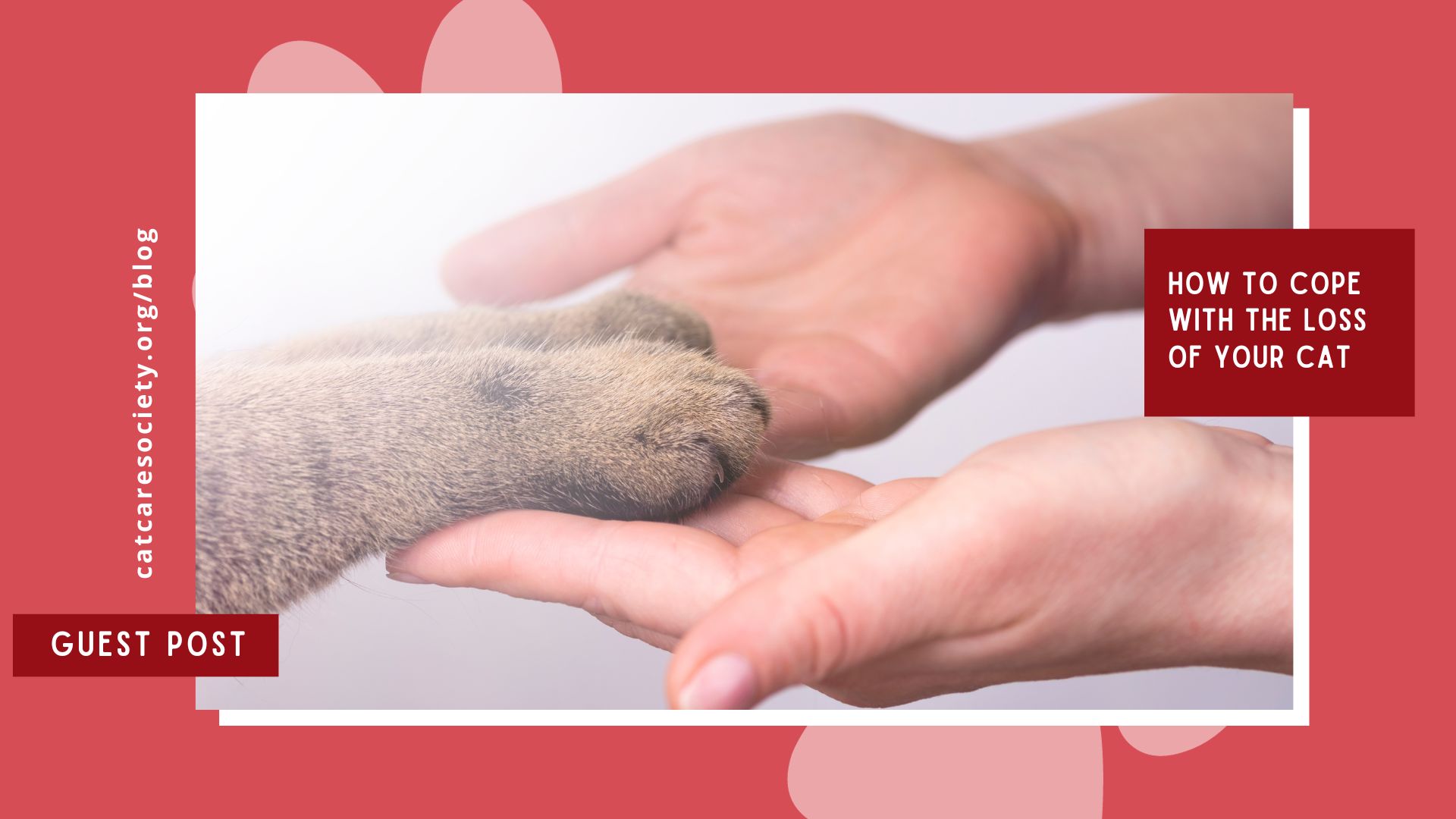
By Desiree Argentina, CCS foster and adopter
The death of your cat can be one of the most devastating losses you will ever face. It can be just as difficult or even more so than the loss of a human family member. The loss of your beloved cat can be extra hard to deal with because they are by your side every day and love you unconditionally. They bring you joy and keep you laughing with their silly antics.
The loss of your cat can be distressing and overwhelming. It’s completely normal to feel a range of emotions including sadness, anger, guilt, shock, disbelief and despair. You may even experience physical symptoms. Common physical symptoms associated with grief include stomachaches, headaches and fatigue.
It doesn’t matter if your cat was with you for 20 years or just a few months. The loss is still just as real and painful. Losing your cat is extremely difficult and can cause indescribable grief. You deserve the time and space to grieve the loss of your best friend.
Many times, we know the passing of our precious feline is in the near future. Whether you are watching your cat get older or they have a heart-wrenching diagnosis, losing your cat is just as painful if it was expected. This is called anticipatory grief. It’s the feeling of grief experienced before the impending loss.
Anticipatory grief is just as valid as the grief experienced after the loss. Even with anticipatory grief, many find themselves unprepared for the grief they feel before losing their beloved cat, and they may find it difficult to express their grief, especially when their beloved kitty is still with them. Anticipatory grief is a very valid and real part of the grieving journey. It is OK to grieve though your pet is still with you. Everything in this article also applies to anticipatory grief.
The first few days after your cat passed away may be the hardest. You may feel like you are in a daze, unable to think clearly or concentrate on anything else. You may find yourself crying randomly or feeling anxious or restless without your furry best friend by your side. You may even feel numb or detached from your surroundings. All of these reactions are completely normal and to be expected.
It’s important to give yourself time to grieve. This is a normal process and can be helpful in healing from the loss. The grieving journey is different for everyone, but there are ways to cope with the loss of your beloved cat. If you’re dealing with the grief of losing your cat, read on for some ways to help.
Allow yourself to feel all of your emotions, even ones you may not expect.
Journal about your cat and your feelings. Writing about your cat and the loss can help you to process your emotions and put words to the difficult emotions you are experiencing.
Do something creative to express your feelings. You can draw, craft, make a collage, scrapbook, write a song or a poem. Using your creativity is a great way to process and express your grief in a healthy way.
Reach out for support. Continue reading to learn different ways you can gain support through this difficult time.
One of the best ways to express your grief is by honoring your best friend. Here are some ideas for different ways you can honor or memorialize your sweet kitty.
You may need a little extra support through this difficult time and there is no shame in that. Sharing your feelings about your pet’s death with others who understand can help you feel less alone in your grief journey and allow you to connect with others who share similar feelings. Ask for help from friends and family members who’ve gone through similar experiences. The more support you have from other people who understand what you’re going through, the more you will be able to express your grief.
Here are some ways that you can seek support through this devastating time:
If you find that your grief is so overwhelming that it interferes with daily life, consider talking with a mental health professional about how to cope.
You must take care of yourself through this difficult time. Practicing self-care and being gentle with yourself while maintaining your physical and emotional health is so very important. Here are things you can do to take care of yourself through your grief journey:
Cats are family. Losing your furry best friend is a devastating loss and the grief can be debilitating. It’s important to express your feelings of grief and to seek support. Be gentle and patient with yourself. Losing your cat is devastating. Remember that you gave your cat the best life you could have and they knew how much you loved them.
When you are ready, consider adding another pet to your home.

About the Author: Desiree Argentina is a mental health therapist, podcast host and crazy cat lady with an Etsy shop. Desiree fosters cats as well as does TNR (trap neuter release) in the community to help decrease the stray cat population. Desiree has three of her own cats (two of which she fostered and then adopted through Cat Care Society). She recently lost her elderly cat, LeeLee at the age of 17. Desiree is passionate about the human-animal bond and educating others on the benefits that animals can have on our mental health and overall well-being.
This post was authored and edited according to Cat Care Society’s editorial standards and style. Opinions expressed may not necessarily reflect that of CCS.
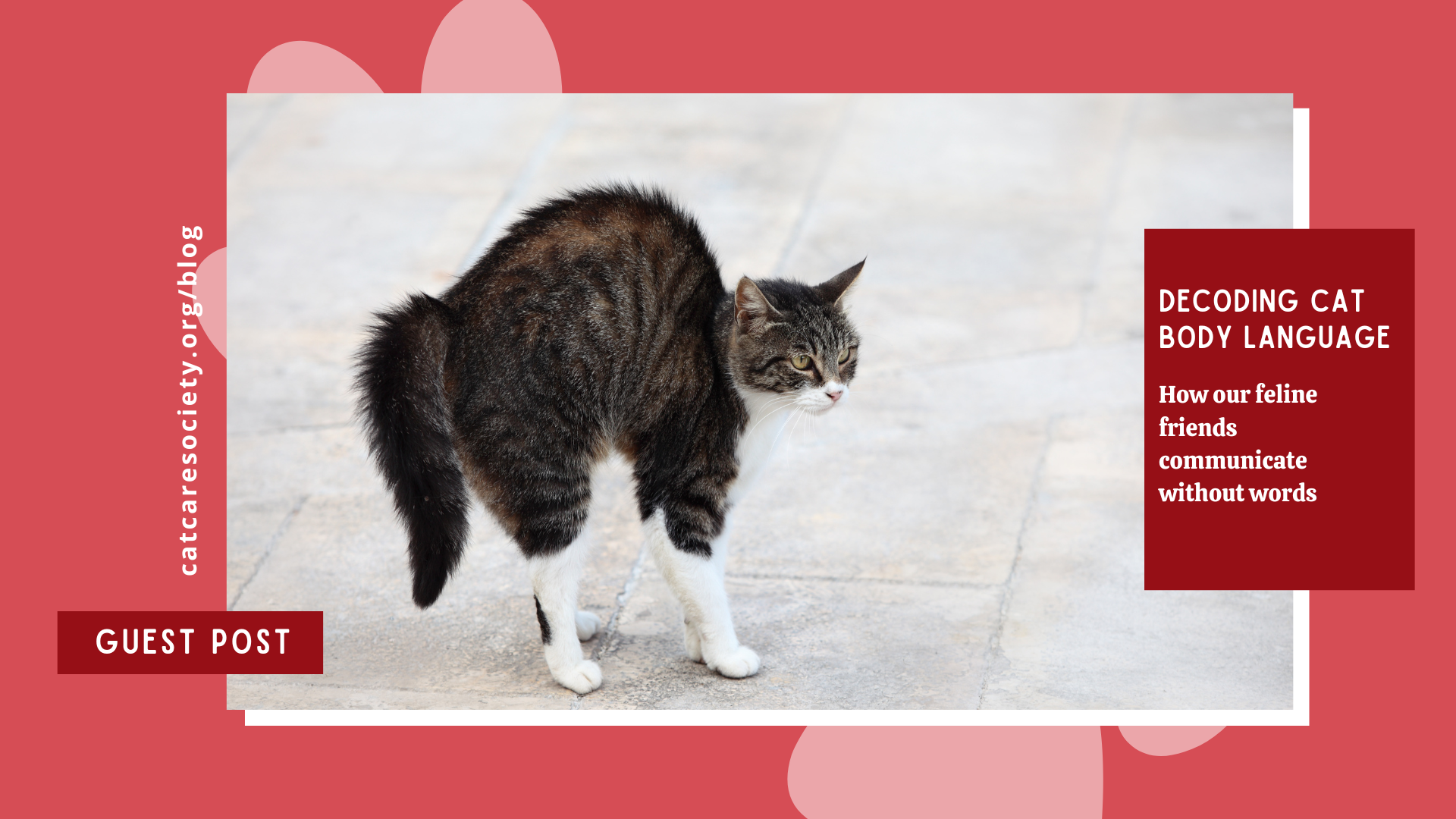
Understanding a cat’s body language is vital for cat owners and enthusiasts to establish a strong bond and communicate effectively with their feline companions. By deciphering the subtle non-verbal communication cues provided by their ears, eyes, tail, whiskers and behaviors, we can gain valuable insights into a cat’s current emotions and cattitude. This knowledge allows us to respond appropriately, ensuring positive and respectful interactions.
Billie Reynolds, certified cat behavior consultant and Cat Care Society partner recommends consistently taking time to observe and trust a cat’s body language before acting on our own feelings. We may want to play or cuddle with our cat, but we must first check their cues to understand their current emotions and proceed accordingly.
From ears to tails, learn about all the ways our feline friends communicate non-verbally below.

A cat’s ears are like radar, constantly scanning its surroundings and reflecting its emotional state. Three primary ear positions hold specific meanings:

A cat’s eyes are highly expressive and can reveal a wide range of emotions. Understanding their eye cues can significantly improve human-cat interactions.

A cat’s tail is a powerful communication tool, and each tail position conveys distinct messages.

Cats use their whiskers to judge proximity and express their mood.

Understanding common physical behaviors can also offer valuable insights into a cat’s emotional state.

Cats possess intricate and subtle body language, making it crucial to pay close attention to their non-verbal communication. Respecting a cat’s body language is essential in establishing a trusting relationship. By observing and interpreting their ear and whisker positions, eye cues, tail movements and behaviors, cat owners and any cat lover can lay the foundation for a new cat relationship and develop deep, long-term connections. Remember to observe, proceed with caution and always respect a cat’s boundaries.
Want to learn more about cat behavior? Check out our upcoming free seminars to learn about upcoming events and seminars that can provide additional ways to learn how to build a strong relationship with your cat. We also have a curated list of cat behavior resources and cat behavior specialists that can provide additional support, and, of course, the rest of our blog is full of helpful and fun cat facts to help you and your cat live your best nine lives.
About the Author: Beth Dokolasa is a volunteer for Cat Care Society and served on the organization’s junior board. She is an instructional developer for Natural Grocers and lives in Indian Hills, Colo., with her husband, young daughter, and two cats, Techno and Digit.
This post was authored and edited according to Cat Care Society’s editorial standards and style. Opinions expressed may not necessarily reflect that of CCS.
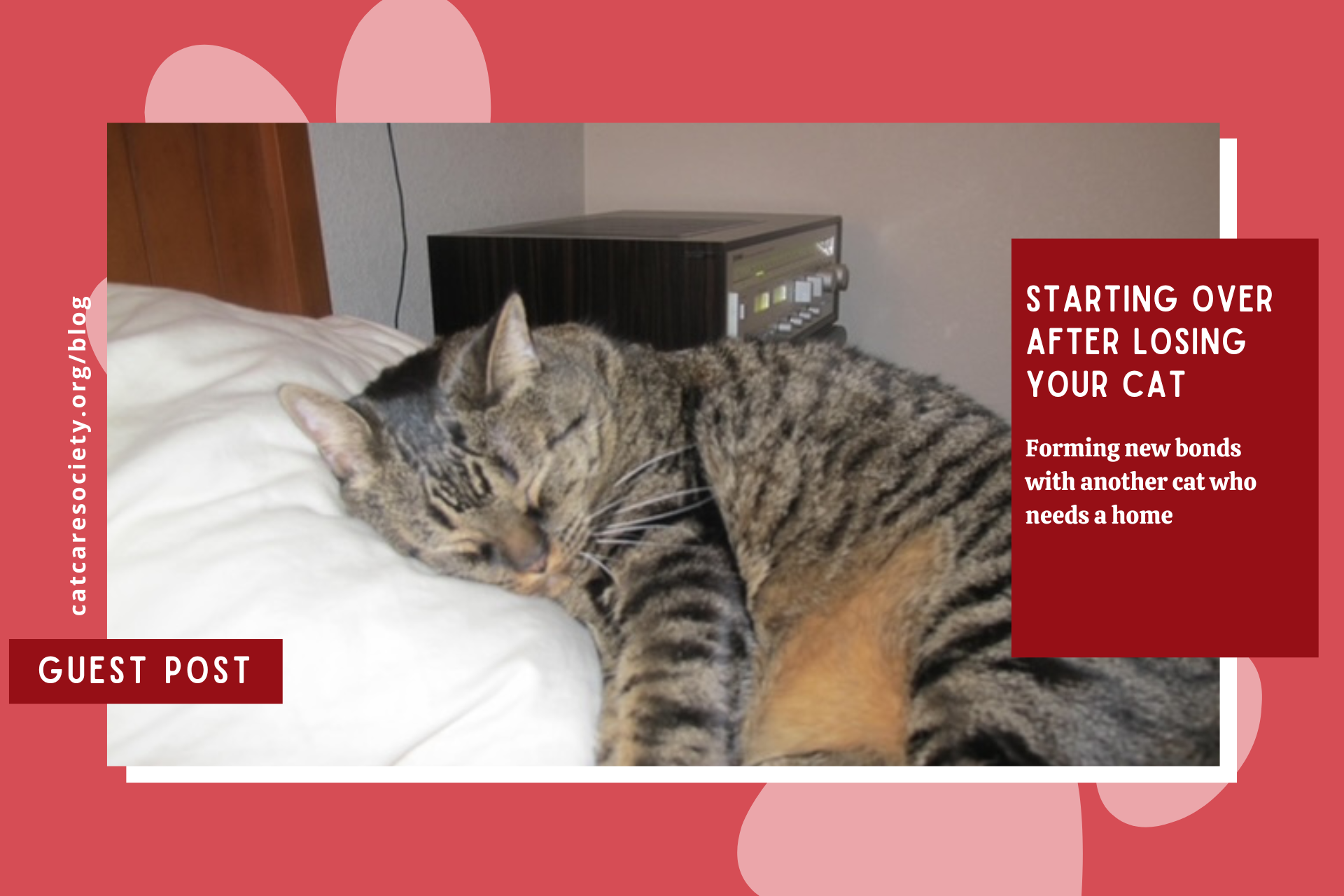
By Linda Brandon, advisory board member
I am often saddened when people who have lost a beloved pet cat say they cannot bear the pain of adopting a new cat or kitten. It seems they are missing the joy of giving a new cat a home. It is possible to form a wonderful bond with a new cat. Every cat is different, but they will still hold a special place in your heart.
I have two cats now who are beloved family members. One cat never replaces another; however, they do present the opportunity for a new bond of love and friendship. Lilyana Bella Marie Rose is 16 years young and came from the Longmont Humane Society. We had just lost Monet at the age of 20+ years. Monet could not be replaced, but Lilyana has become a constant companion and dear friend. She follows me everywhere and is a lap cat.

Douglas Tyler Thomas Milsybops came from CCS as a kitten seven years ago, after we sadly lost Tyler Vaughn Tipperary from complications of colon cancer. Tyler was also from CCS, where he crawled up my chest and wrapped himself around my neck in the shelter. Tyler was strictly my cat, soul mate and life partner. He tolerated my husband Mark, but he let him know that he was there first. Tyler came after our cat Justin died of old age.
I was sure I would never be as close to Douglas as I had been to Tyler. Douglas is his own man while taking on many characteristics of Tyler and another cat, Miles Milsybops. Douglas has become a snuggler like Miles. He currently sleeps on top of me or beside me every night. He warms my feet when he lays with me on the sofa. Douglas loves both of us but leans toward his momma. He had Tyler’s stoic loyalty and is always glad to see me.
He and Lilyana slowly developed a strong bond, even though she did not like him at first. All he wanted was a friend and a playmate. They now snuggle up together at the fireplace and on the sofa. We call it canoodling. It is good to see their bond is strong even though there is an age difference.
In a very short time, my brother and his wife, my nephew, and my niece all lost beloved cats. They said they could not bear the loss of losing one more. They even talked each other out of starting over with another cat. Finally, my niece did a great thing — she adopted an older cat. She knew everyone wanted a kitten, but she felt a more mature cat would fit their lifestyle.

Contessa, nicknamed Tessa, turned out to be a wonderful cat. She had a few minor behavioral issues, which were easily corrected with a cat therapist. She has brought so much joy to their home. She goes to the cat spa when they go on vacation.
My sister and her husband live on a ranch. So many cats enrich their lives as they provide attention, food, shelter and water. Two cats, Winnie and Wanda, live in a heated barn. They just recently brough a ginger cat, Missy, into their home. She provides constant delight and companionship. She just came walking down the road one day and found her way inside. Miracles do happen.
This article would not be complete if I did not mention that some people should not adopt. If you cannot provide a safe, primarily indoor existence for a cat, you might reconsider adopting. Many people adopted cats during COVID and returned them when they went back to the office. A cat needs shelter, companionship (to a degree), food, water, toys and a litterbox. Most can be left alone while you go to work or other places. They do need you to pay attention to them and make them feel special when you are home. It is too hard on the cat if these needs cannot be met. Please also consider how your current pets would react to a new family member.
Cat Care Society has many great cats for adoption. Your best friend and companion are just waiting for you to meet them and fall in love! The adoption assistants at Cat Care Society can help you with a new addition to your home. If you have recently lost a cat or have never had one, stop by today. The staff will be happy to help you find the right cat for your home.
This post was authored and edited according to Cat Care Society’s editorial standards and style. Opinions expressed may not necessarily reflect that of CCS.
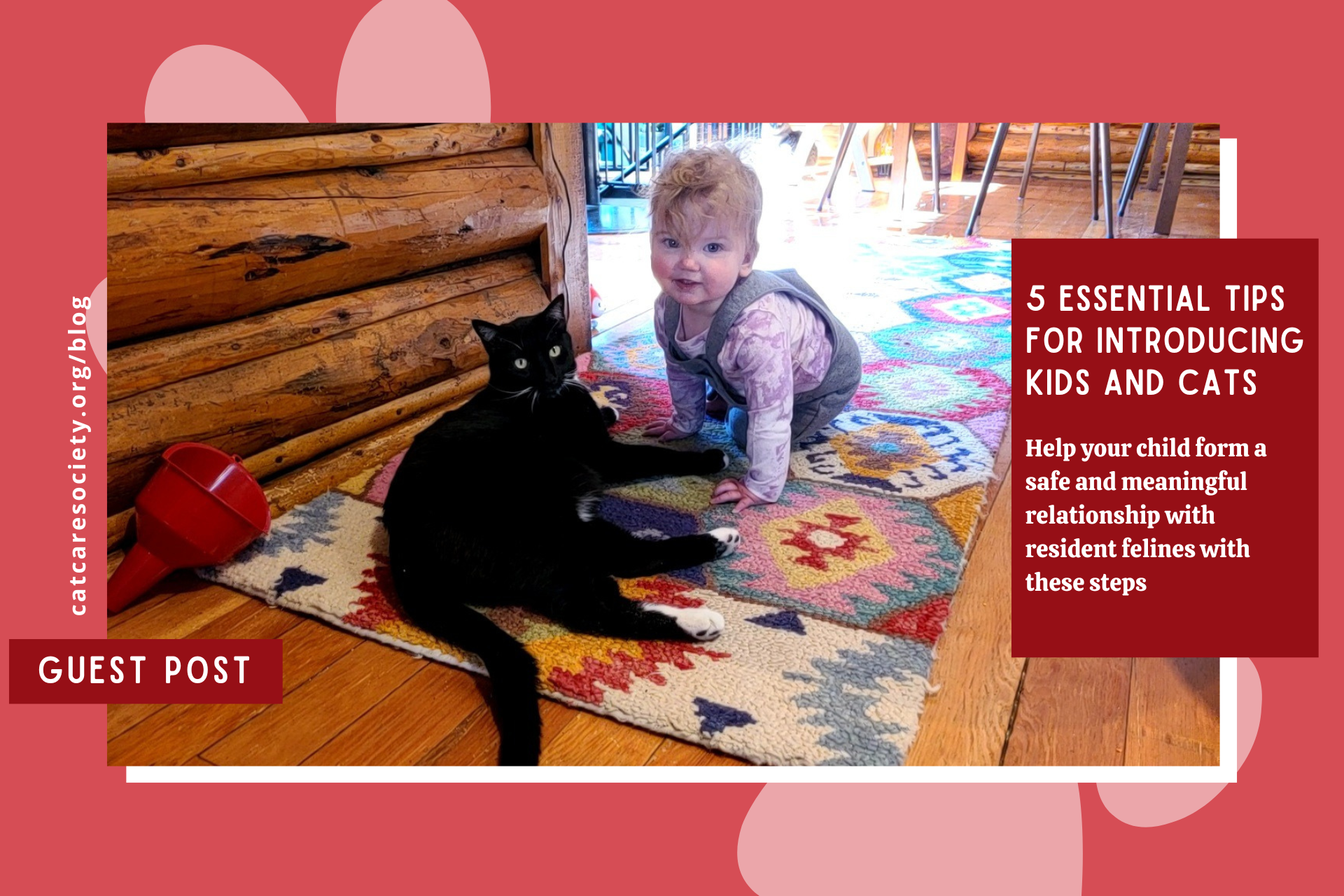
Children and cats have the potential to become purrfect companions. Cats can teach children valuable life lessons about responsibility, empathy and respecting boundaries. Likewise, a child can become another trusted human for the cat, providing a cuddly lap to sleep on. However, it is crucial to plan a new introduction with care to ensure a pawsitive experience for both. In this article, we will explore essential tips for introducing children and cats so that they can foster a strong bond in a safe and harmonious environment.
The first and most important step in introducing children to cats is teaching the child to respect the cat’s boundaries. Explain that cats have their own personal space and may not always want to be cuddled or played with. Every cat will have his or her own unique preferences for contact and interactions. Demonstrate how to approach the cat calmly and let the feline initiate contact. Additionally, ensure the cat always has a designated place to retreat, if needed. Teaching respect for boundaries ensures that both the child and the cat feel comfortable and safe in each other’s presence.
Understanding cat behavior is key to a successful introduction. Educate your child about common feline behaviors such as purring, tail flicking and ear movements. Explain that cats use body language to communicate their feelings and emotions. This knowledge will help your child interpret the cat’s signals, leading to better interactions and a deeper understanding of their feline friend’s emotions.
Supervision is crucial, especially for young children. Encourage your child to sit quietly and let the cat approach at their own pace. Plan to keep the interaction short at first, and if the cat’s body language begins to show signs of overwhelm, tell the child that the cat needs a break or some time alone. Gradually increase the duration of interactions as both the child and the cat become more comfortable with each other’s presence.
Young children are naturally curious and want to touch new things around them, especially things that move, including swishy cat tails, but this can sometimes lead to rough handling. It is important to teach your child how to handle a cat gently and with care. Demonstrate the proper way to pet a cat, emphasizing avoiding sensitive areas like the belly or tail. Encourage soft strokes and provide positive reinforcement when the child shows gentle and respectful behavior toward the cat.
If the child starts playing rough with the cat, such as pulling a cat’s tail, ears or whiskers, firmly tell them to stop and redirect them on how to pet gently. It’s important to intervene, even if the cat seems unbothered, because you don’t want the child to assume that all cats are comfortable with rough play.
Involving children in the care of the cat fosters a sense of responsibility and strengthens their bond. Assign age-appropriate tasks to your child, such as feeding, grooming or playing with the cat using interactive toys. Supervised play allows children to understand the cat’s natural instincts and provides an outlet for their energy. However, always supervise young children during these activities to ensure the safety of both the child and the cat.

That’s OK! There are some remedial steps you can take to ensure a more successful reintroduction. The following tips may also be useful for first introductions, especially if you’re working with a child or cat who are known to be slow at warming up to new situations.
Introducing children to cats can be a delightful and enriching experience. By teaching respect, understanding and responsibility, you can help foster a strong and loving bond between your child and their feline friend. Remember to supervise initial interactions, encourage gentle handling and involve children in cat care. By following these guidelines, you’re setting the stage for a lifetime of companionship and cherished memories between the child and cat.
If you’re considering welcoming a new cat into your home, we invite you to explore Cat Care Society’s current adoptable cats, as well as our foster program. And, don’t forget to read more blog posts for additional resources on creating a safe and comfortable home for your feline friends.
About the Author: Beth Dokolasa is a volunteer for Cat Care Society and served on the organization’s junior board. She is an instructional developer for Natural Grocers and lives in Indian Hills, Colo., with her husband, young daughter, and two cats, Techno and Digit.
This post was authored and edited according to Cat Care Society’s editorial standards and style. Opinions expressed may not necessarily reflect that of CCS.
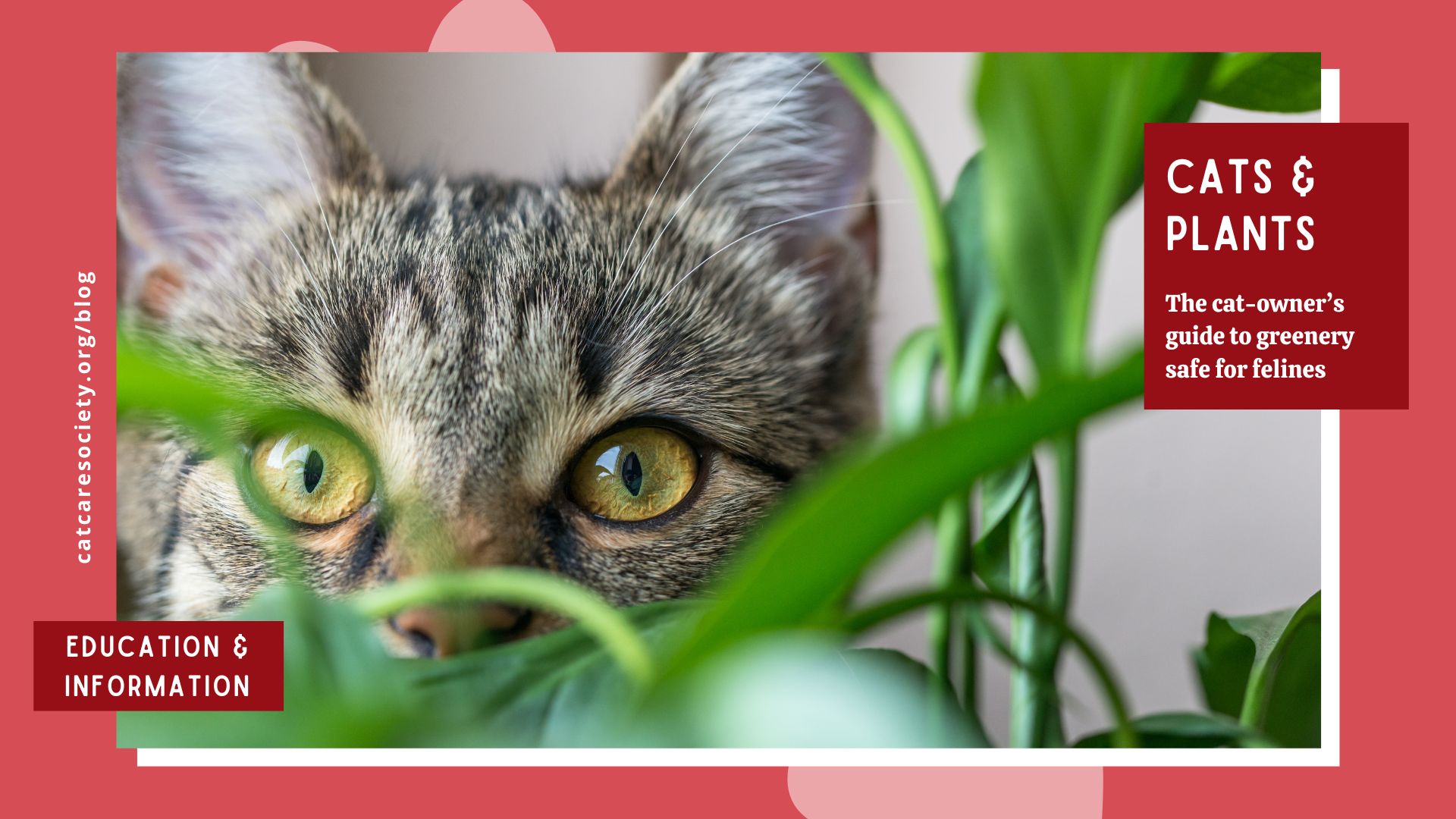

Enrichment is an important element in caring for cats, especially in the often-stressful shelter environment. CCS has always had a dedicated team of volunteer socializers and animal care technicians to support cats. But when two current staff members started, they saw an opportunity to increase the impact.
One animal care tech took an interest in feline enrichment and laid the groundwork. Kelly Cunningham, now our lead enrichment specialist, created an “enrichment calendar” to use with the cats. However, with few supplies, she had to get creative, collecting paper towel rolls, crinkly paper and pipe cleaners to provide enrichment on a shoestring budget.
Once Sonia Holmstrom, CCS’ foster & behavior supervisor, joined the team last year, things took off. With a background in animal behavior and experience in zoos, she has been hard at work creating our own behavior & enrichment program. Thanks to our recent partnership, we’ve implemented KONG’s toys in the shelter to create specialized enrichment experiences for the cats.
“Since the enrichment program found funding, we were able to get more supplies, treats and toys to stock the shelf,” Kelly shared. “The kitties are spoiled with the coolest and newest cat toys on the market! Everything we use for enrichment now benefits the cats by allowing them to feel safe, comfortable and confident enough to express their natural behaviors. We’ve already seen such an improvement in the overall happiness of our cats.”
“It has been fun to build a program that targets improved mental stimulation, exercise and socialization for cats in the shelter, as well as for adopted cats,” Sonia said. “We want to see cats expressing their natural behaviors while also strengthening a bond with humans. The enrichment program has also supported our efforts with cats who need behavior modification.”
“Our shy kitties come around at a much quicker pace than before,” Kelly added. “Many of the anxious and fearful cats come out of their shell faster, and it’s because we have a dedicated team of staff and volunteers who make sure these cats are enriched and happy. Before the program, it would take some cats months to show any behavioral improvement. Now, most of them improve in weeks! This can drastically reduce the length of time they spend in the shelter. Confident cats are adoptable cats!”
What’s the difference? Cat enrichment enhances overall well-being, while behavior modification targets specific behaviors for improvement.
A cat’s enrichment is tailored to their needs based on factors like age, diet, medical needs, behavior and personal preference. A successful tailored enrichment program provides:
“First, I consider the environmental enrichment,” Kelly said. “The rooms are set up to fit the individual needs of the cats to reduce stress and anxiety: Where do they like to hang out? Do they like vertical space? Do they prefer to have their own ‘corner’? In a multi-cat room, this is accomplished by splitting the room into smaller areas, each spot with its own bed, food/water and litter box so each cat can claim their own space and reduce tension over territory. The furniture is strategically placed to maximize the ‘cat superhighway’ space and allow for more vertical movement. I also consider what kind of bedding they prefer, if they sleep up high or down low, if they hide/play in tunnels or use them to cross the room unseen. Many cats prefer water fountains, which are great for environmental enrichment. A variety of scratchers are also a necessity for scent-marking. I make sure to include several different kinds of toys; I put battable toys of different textures, (crinkly, soft, jingle bell) on the floor and on high surfaces. I also set out solo play toys, such as the ball & track type or interactive/motion toys. Finally, I leave out treat puzzles for cognitive stimulation. Before I leave the room, I engage in hunt and play sessions with the kitties. Our enrichment charts have a spot for comments where we write the cat’s preferences or favorite toys, which has been helpful in deciding what to use each day.”
Kelly’s favorite recent success story is Holly and Chloe, a pair who came to CCS extremely fearful and reactive. Because of their age and some medical issues, at first we did not believe they would have a successful outcome. Kelly began to visit them several times a day, playing David Teie’s cat frequency music while sitting on the floor, offering a Churu treat and some calming words and pets with a telescoping brush.
“Chloe seemed to be a bit more social and less reactive than Holly, but I was still determined to help these two feel safe and happy,” she explained. “Holly moved into her own room and relaxed only a tiny bit, so she went to a lovely behavior foster who put in so much time and effort helping her come out of her shell. Truly, Holly’s behavior would not have improved without the help of our foster. In the meantime, Chloe was moved into the shy cat room. I visited her several times a day and gave her lots of treats and attention. For a while she would remain in the hidey cube and let me pet/talk to her, but after two weeks, she would come out of the cube to greet me and solicit pets. Then I began short play sessions and offered treat puzzles (which I discovered she absolutely loved). A month or so later, Chloe had improved remarkably and was greeting most people who entered the room and showed her some attention. Holly came back from foster and joined her sibling in the room. I used the same methods on Holly then; consistently going in to sit with her, establish trust and build confidence. About a week before she got adopted, she was also coming out of the hidey bed to greet me when I approached. I truly believe these two became so confident and happy because of the dedication of our love, attention, time and enrichment we provided for them during their stay. I’m so happy they both found their forever homes. I’m so proud of how far they came!”
There can be misconceptions about what enrichment for cats. Though cats can be independent or aloof, that doesn’t mean they don’t need interaction. “Enrichment is necessary for the physical and emotional well-being of cats, which is more than just playing with them,” Kelly said. “Enrichment provides an environment that is comfortable, safe and stimulating. Enrichment gives cats the confidence to be their best selves. Imagine if you lived in a house with nothing to entertain you or make you feel at home! No comfy beds or couches, no TV, no video games, no snacks or hobbies. Life would be pretty boring. Cats are no different, and it’s our responsibility as pet owners to give our animals a fulfilling, happy life.”
To learn more, visit our Behavior & Enrichment program page!
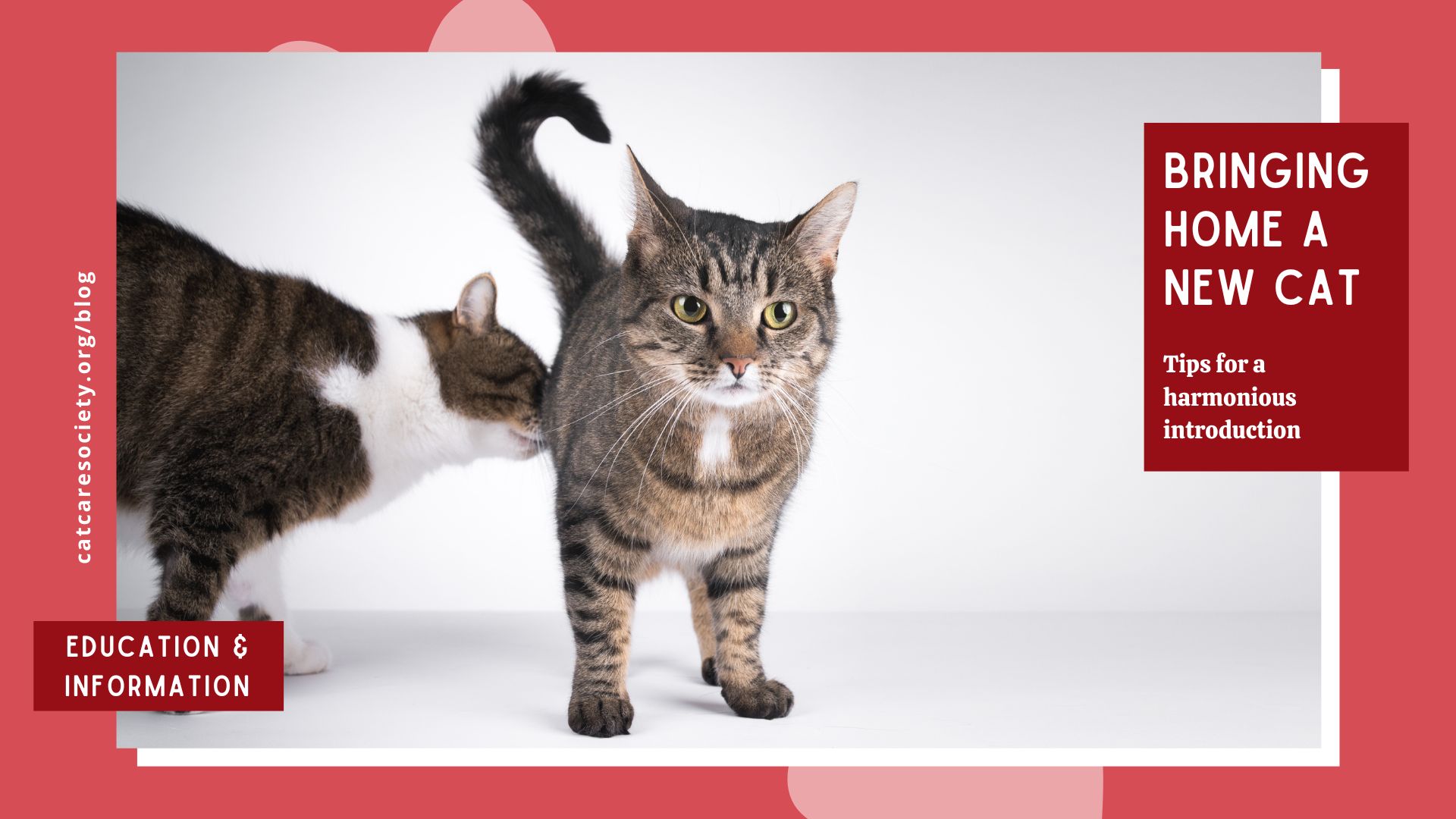
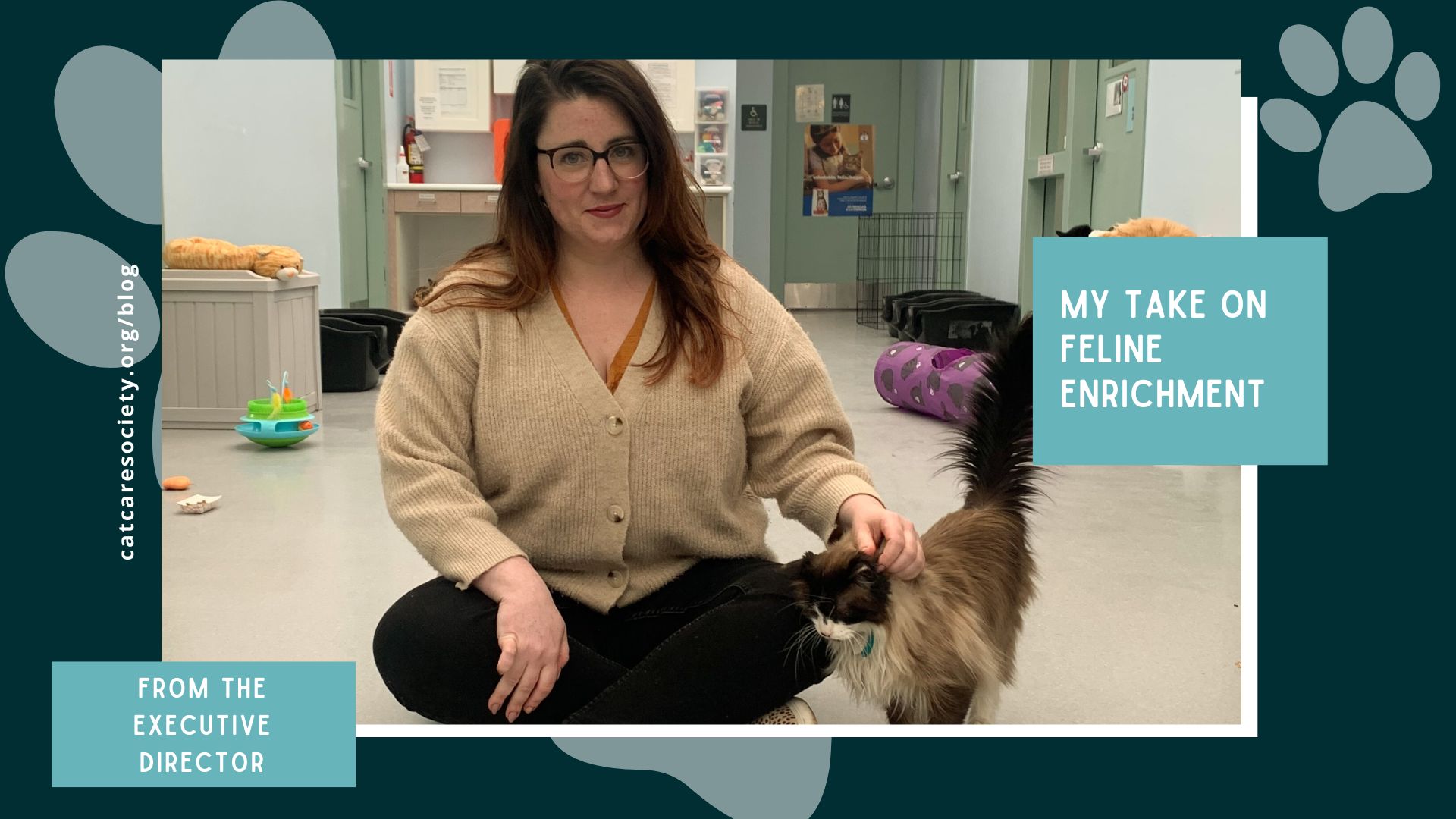
It’s another busy summer season here at Cat Care Society. As is typical for this time of year, we are seeing a rise in requests to take in cats as we — and many other shelters — navigate the influx of kittens. As we head toward the final peak of the season around October, we also have several irons in the fire for CCS’ future. You may have noticed some construction recently as we install a new elevator. More special projects are in the works to ensure our building can best serve the cats in our care.
In our summer 2024 Cat Care Quarterly, you will find several articles about cat behavior and enrichment — two topics that we’ve been focusing on lately that you will hear more about! It’s so important to us to offer experiences that help build the minds and bodies of our feline friends so that they are happier, healthier and more adoptable.
But there are actually some common misconceptions about why exactly enrichment matters. In fact, research about cats has been significantly behind what has been done for behavior modification in dogs. Why is this? While there is a long and varied list that has brought about this lag, much of it is related to the idea that cats are more independent and not as social as dogs.
Posing a potential risk to the public, animal welfare policy has been directed at statutes focusing on dogs as well as the creation of animal shelters to house them. This focus is partially why they’ve received the bulk of behavioral research! Unfortunately for cats, they haven’t received the same level of support until recent years.
Throughout my time working in shelters, I’ve seen a few trends play out. Dog owners experiencing unwanted behaviors often think about working with a professional to resolve an issue. Plus, it’s easier to find a dog trainer than a cat behaviorist. Cat owners are more likely to view a problem as unfixable (or too hard to fix) and rehome or surrender them.
Some shelters don’t take in cats in the first place, and even more aren’t able to offer formalized enrichment to the cats in their care due to capacity. The flip side of this is that cats are more at risk for health issues in shelters because they don’t handle stress well. Additionally, behavior exhibited by cats is often labeled incorrectly, limiting our ability to create possible interventions and support plans.
That’s what we’re trying to change. By building a comprehensive cat enrichment and behavior program, we hope to begin slowly changing the narrative and evening out these trends. Cat Care Society has long been dedicated to supporting cats and their owners through adopter education and seminars. But now, we’re ready to take it a step further. We want to up our game and offer better avenues for cats in our care to exhibit normal behaviors. The opportunity to learn to trust humans, to play with toys, stimulate their senses and increase their physical and mental development, is something we are so passionate about and excited for.
When we take in unsocialized or fearful cats, we’ll now have a system for them to gain confidence faster, to address their needs in meaningful ways and create opportunities for those who have a need that has gone unfilled.
We couldn’t do this work without the support of our partners, though. We are so thankful for the other shelters in our area who trust us to take in their animals and work with them successfully. Because other rescue groups — especially those in rural areas — don’t have the same resources, we welcome their animals to our facility to work with our medical and behavioral team and have a real chance.
We have seen countless animals who weren’t thriving in other shelters or a prior home come out of their shells and completely transform once they’re in an environment that offers them the space and support to blossom. No shelter is the same as a home, but the closer we can get to that, the better a cat will do. Our free-roaming spaces and enrichment opportunities means that these kitties can become their true selves, find their natural behaviors and let their personalities shine. This makes adopters be able to envision that cat in their home easier and have a more successful adoption story. And every adoption — and foster home — means that we are able to help one more cat have that same opportunity.
If you’re looking for more information on cat enrichment or need help finding a behaviorist, please visit our website’s Resources, Enrichment and Blog pages, or reach out to talk to us about how we can help!
More Resources

A woman full of life, love and light, another Cat Care Society supporter, Leanne Emm passed away this past March.
A fourth generation Colorado native, Leanne was known for her sense of adventure, intellect and devotion. With decades of public service, she held roles in city and county government, going on to lead as the deputy commissioner of the Colorado Department of Education. When she wasn’t working, Leanne loved fitness, river rafting, watercolor paintings and napping in the sun with her cats (four of them adopted from CCS!).
Leanne served on CCS’ board of directors in 2017, and after retiring from her career in 2018, stepped into a larger, critical role as interim executive director. “It had been a turbulent couple of years for CCS, and Leanne was such a positive, steadying influence,” remembers Clyde Dawson, another long-time board member. “And what a sense of humor! As it turned out, one of the most important contributions she made to CCS was organizing and conducting the search for a permanent ED. She was an avid whitewater rafter and had been looking forward to river-running nearly full time in retirement. She also remained a strong supporter of the organization.”
Clyde recalls Leanne as a tremendous asset to CCS — “exceptionally intelligent, with a keen grasp of finances and management issues of all sorts, as well as warm and engaging,” he said. “I think she won us all over when she wrote in her board application that one reason she was interested in board service was that it would give her an excuse to come into the shelter more often and play with the cats!”
Leanne’s daughter Charlotte says that her mother loved cats her whole life, that they were a really grounding thing for her. “She just loved all animals, and cats were her favorites — that and baby goats and horses!” she said. “She loved CCS and seeing how happy people were when they got to bring a cat home.”
Leanne’s last update in the summer 2018 Cat Care Quarterly oozed her warm, bright personality and gratitude. For everything that she brought to our organization and the world, we’re grateful for her, too.

A long-time Cat Care Society supporter and leader, Gail Tinianow, passed away this spring, leaving behind a commitment to cats and a love for travel.
A child of Air Force parents, Gail was born in New York and lived in various parts of the U.S. and Spain. Early in her career, Gail worked for the federal government in Washington, D.C., and eventually earned a degree in business administration from Arapahoe Community College. She and her husband Marty married in 1985; she retired in 2006. Marty shared that Gail’s love of cats was extensive.
Her retirement marked the start of a 10-year dedication to Cat Care Society, when she began looking for volunteer opportunities. Jane Dorsey interviewed Gail to work in Cajun’s Closet, Cat Care’s thrift shop, in 2008. In 2011, she joined the board of directors to help ensure the financial success of CCS. Over the next several years, she would go on to hold roles of secretary, vice president, and president. In those days, CCS had a working board, recalled Ken Dobrovolny, so Gail was hands-on in the day-to-day operations of the shelter “and ran a tight ship.”
Jane Dorsey recalls Gail’s enjoyment of the Santa Paws Festival and the role she played in the planning committee. “I remember her bringing detailed records of everything from the prior year and challenged us to make it even better,” she said. “She was so enthusiastic about everything she took on, and that made it fun to work with her.”
Gail also generously donated a trip to her timeshare in Hawaii for the Tails of the Painted Cats auction more than once. “She was so excited when she came up with the idea of pairing a trip with a Hawaiian-themed sculpture,” Jane said. “Artist and volunteer Pat Lickly created the Hawaiian cat, and we had fresh flower leis made for Gail and the high bidder that night. She loved that event and whole-heartedly supported it.”
In the winter 2016 Cat Care Quarterly as board president, Gail wrote: “Our first order of business in the new year entails recruitment of an executive director. Your board has been running the Society since 2011, and I’m happy to report that we are now financially strong enough to fill this position. I’m simply honored to be at the helm of this great organization and cannot express enough appreciation for our amazing donors, volunteers and staff.”
Gail eventually stepped back from the board in 2018, but we will remember her for many, many more years to come.

Abandoned, neglected and wounded after surviving a house fire, Fish Stick was found by a kind neighbor just in the nick of time. Little did anyone know, he was already up against more struggles than met the eye.
Believed to be the only surviving pet, this senior Siamese mix was down to 6 pounds and in dire need of medical attention. Realizing the level of care he needed, the neighbor reached out to our friends at Cooper’s Companions Animal Rescue for help. They brought him to Cat Care Society, knowing our specialty in helping cats that others would give up on.
Fish Stick had severe lesions on his face, neck, back and paw pads. He immediately received antibiotics, fluids and pain medication. He needed a cone to stop scratching at the sites.
Without veterinary treatment for so long, Fish Stick’s wounds were infected and bleeding.
“His teeth were horrific, his skin was falling off, and he was just a complete mess,” our lead veterinarian Dr. Cecily Palamara, recalled.
Further exams revealed he also had a heart murmur, severe periodontal disease, conjunctivitis, upper respiratory infection, anemia and about 8 more underlying conditions. Not to mention a positive ringworm test. Add to that, he was blind in one eye from a previous trauma. We called it his wizard eye.
Considering his multitude of issues, a successful long-term outcome was unclear. Our goal shifted to maintain his quality of life while treating what we could.
From the start, Fish Stick was a total lovebug. Regardless of any pain he felt, he maintained the sweetest disposition, purring constantly and rubbing affectionately on staff during every treatment. It seemed he was up for the fight.

After addressing his most urgent needs, we slowly started ticking concerns off the list. Within a couple weeks, we saw significant improvement. He was gaining weight, hydrated again, his conjunctivitis was resolved, and his skin was looking better. Test results showed that some of his skin issues were not burn related, but were actually allergies. A month in, his liver values were completely resolved, anemia was on the right track, but his lymphocytosis was worsened.
Just when he took one step forward, there were another two steps back.
One employee stepped up to foster Fish Stick for close monitoring and an aggressive medication regimen.
After numerous medical setbacks, Fish Stick turned the corner in his foster home.
In foster, Fish Stick began to thrive. Just weeks in, he was markedly improved on nearly all accounts and finally clear of ringworm. His fur grew back in and he was at an ideal weight.
“He kind of became a celebrity,” Dr. Palamara recalled. “The whole team would come down for his rechecks. Every time we saw him, he looked better and better. He just needed some time and TLC, and he got that here.”
About 100 days after he came through our doors, Fish Stick was ready to become a candidate for adoption — with no less than 14 medical disclaimers. To make sure his adopter knew the extent of his conditions, a consult with our vet was required.
A host of medical issues was no concern for his adopter ready to open his heart and home.
Michael came to the shelter looking for a Siamese cat after losing his own. He learned about Fish Stick’s history and ongoing concerns but was unfazed, willing to take on whatever came with this friendly boy.
After going home with Michael, Fish Stick settled right in. He even gained a new friend, as Michael adopted another CCS cat, Jack, from us the same day.

“Every day, both cats are getting more comfortable, and I’ve spent a lot of time playing with them,” Michael updated. “Jack is renamed Taz after the Tasmanian devil since he runs around like a tornado. Both cats are super smart and such a joy.”
Looking at him now, you’d never suspect Fish Stick made it through such a horrific event. The time and energy we put into this cat was significant, and his glow-up is a perfect example of who we are and what we do best. All in all, the cost of Fish Stick’s medical care alone was near $3,000. This does not include everyday expenses of living in a shelter, such as his food, litter, supplies or staff time.
Fish Stick pioneers a way for so many other cats who deserve a second chance after a bleak outlook.
We simply wouldn’t be able to take care of cats like Fish Stick if it weren’t for your support. Your tax-deductible donation ensures that more cats facing the worst have a chance at finding health and happiness in a new loving home.
With hope and gratitude,
EC Michaels
Executive Director
Cat Care Society
P.S. Thanks to you, Cat Care Society was able to help over 1,000 cats last year! Because we rely 100% on donations to keep up, we need your help to find loving homes for cats in need.
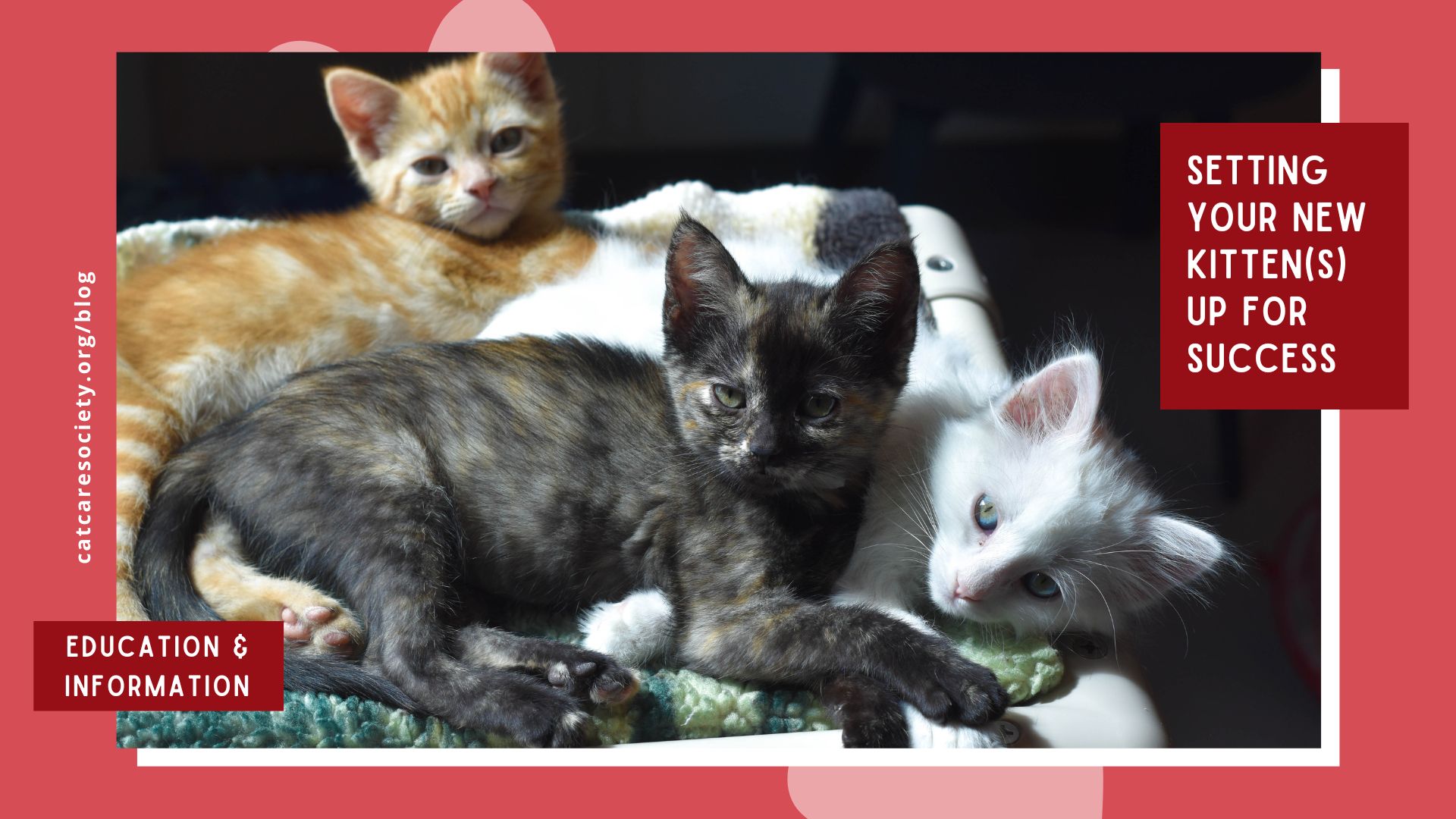
Jump to: Why 2 Kittens Are Better Than 1 | What’s the Deal with “Kitten Season?”
So you adopted — or are thinking about adopting — a new kitten. Congrats! These tiny furballs bring so much love and joy to a home, but they also need quite a bit of care! Without proper support from the start, your little one may develop some bad habits that are hard to break as adults.
We all know that kittens bring lots of energy and are oh so cute, but caring for a baby cat goes well beyond just playing with the little fluffy ones. Here’s what you most need to keep in mind when bringing a kitten into your household.
Socializing from a young age helps make everyday items more normal and creates less fear. Less fear in cats creates more confident and comfortable cats who can adapt to change and have fewer behavioral problems later in life. This also helps you create a stronger relationship with your cat!
It’s also a good idea to begin desensitizing them to things like grooming and handling to begin building positive associations. Ask a friend to help feed them while you trim their nails or brush them. Gently look in their ears, eyes and mouth like the vet would do.
Leave a carrier out for them to get used to, and move it around the house. Put treats or feed meals there, and use it for transportation to playtime sessions.
According to Billie Reynolds, owner of Good Kitty Behavior Consulting and Training, a cat’s period of socialization with non-littermates best happens when they are 7-14 weeks old. This is when social and object play increases their coordination and social skills and can happen directly with themselves, with people or with other animals. It can include climbing, hugging, ambushing, licking, pawing, mouthing, holding, chasing, pouncing, leaping and dancing.
We don’t yet want to discourage natural behaviors like rabbit kicking because kittens are practicing, but we can redirect unwanted actions onto appropriate items.
Make a point to offer interactive play on a routine basis with your kitten. It’s best to aim for toys that mimic natural prey or predator interaction (such as a bird, bug or mouse). Fishing poles and Da Bird are two great options. Aim for about 10 minutes per play session. After playtime, offer a high-protein snack, which is what they would enjoy as a reward after hunting in the wild.
If you have multiple kittens, offer each individual, interactive play time.
When kittens reach 3 to 6 months, they begin learning about their environments and other species. This is when they absorb how to live in a home with humans!
From 6 to 18 months old, kittens have become adolescents and have reached their highest need for energy release and mental stimulation. It marks the beginnings of sexual behavior, so we highly recommend they be spayed or neutered well before this time. If there are other cats in the home, watch for territorial behaviors and add new territories like cat trees and towers, water and food bowls, litter stations and sleeping spots as needed.
When cats reach 18-30 months, they’ve become early adults and begin to establish their own territory. Be sure to continue interactive play and provide plenty of territory options for all cats in the home for the rest of their lives.
To maintain interactive play, you can also add enriching experiences like puzzle toys and feeder balls. When picking out toys, consider your cats’ specific behaviors like whether they use their mouth or paws more when playing. You can even make your own toys using common household items (for ideas, check out this post from ASPCA)! To dig deeper into feline enrichment, check out our partnership with KONG!
How do you know if all of this is working? If your cats seem happy and you don’t have conflict, you are on the right track!
One of the best ways to support the behavioral and emotional development of a kitten is to make sure they’ve got a friend. It may be hard to believe, but two kittens are actually half the work of one! Take it from Kitten Lady, who says one kitten is half a kitten, and two kittens are a whole!
Because kittens thrive when they have feline friends, we recommend adopting two at once — or one if you already have a young, playful cat at home. CCS even has ongoing adoption pricing for this! One kitten’s adoption fee is $150 but two are just $200.
Kittens learn by observation and pick up skills like using the litter box when their pals exhibit that behavior. They also are able to channel their playful aggression on each other rather than an unsuspecting human or piece of furniture. For instance, if one kitten wants to use its mouth and bite down on its sibling, the other cat may scram, and that kitten then learns to be gentler when playing.
Not to mention, cats are social and enjoy having other cats nearby. It’s why we have community cat colonies! After all, it’s comforting to have someone their own size to snuggle with and help them feel comfortable in their surroundings.
If you’ve ever heard the term “single kitten syndrome,” it refers to a kitten who didn’t have litter mates or sometimes even a mother around to teach appropriate behavior and boundaries. Like humans who grow up as only children, they tend to miss out on experiences and activities that siblings go through together. In short, everything they learn as a kitten from the cats around them set them up for more success as an adult.
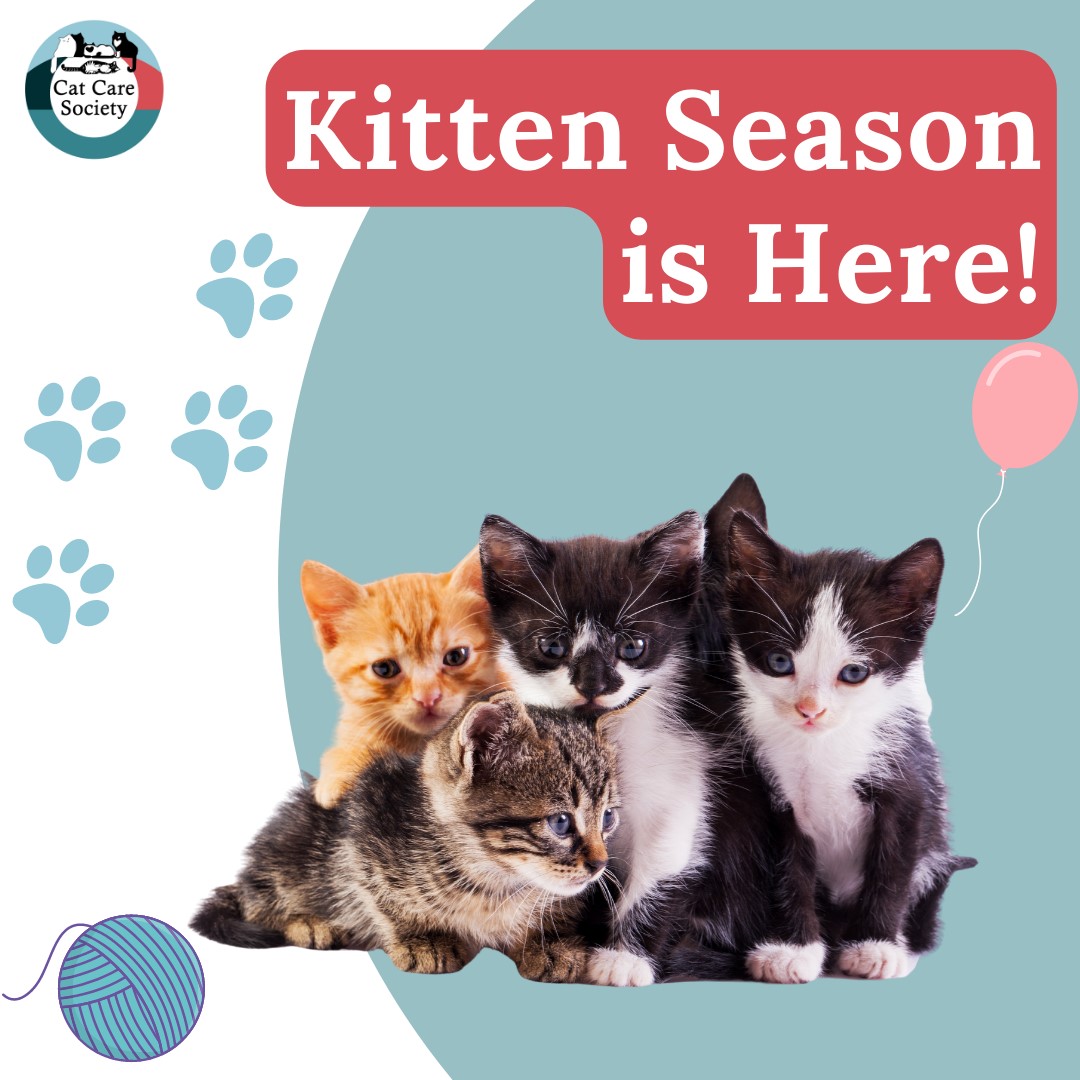
You’ve probably heard the term “kitten season,” but have you ever wondered why kittens are more plentiful during a certain time of year? Just like how humans find certain activities like camping or gardening easier during the warmer months, cats too thrive when the snow starts to melt away.
The days are longer, and there are more resources in the summer (did you know that mice tend to hibernate in the winter?). In climates where there is no winter, places like Florida actually don’t have a kitten season, because it lasts all year there.
Kitten season, or feline breeding season, typically takes place around March through October, and many shelters experience the bulk of their cat and kitten intake during this time. In 2023, Cat Care Society took in 516 kittens!
Momma cats are pregnant for about 60 days. And considering they can have multiple litters a year starting before they even reach 1 year old, it’s no wonder our communities are crawling with cute little kittens. This is why spaying and neutering and TNR work is so important in reducing the stray cat population! If the kittens make it to a shelter or vet, once they reach 2 pounds, they are spayed or neutered and put up for adoption.
Because kitten season is the busiest time of year at the shelter, we rely on our community to help us keep up and save more lives! If you want to get involved, please donate items or funds to support our work, adopt a cat of your own, or consider opening up your home as a foster.
To better understand what to do with a stray, please see our blog post, “So You Found a Stray Cat, Now What?”
To learn more about cat behavior, please consider signing up for an upcoming free educational seminar at the shelter, held on the fourth Saturday of the month at 10 a.m. Find a list of upcoming topics on our website.
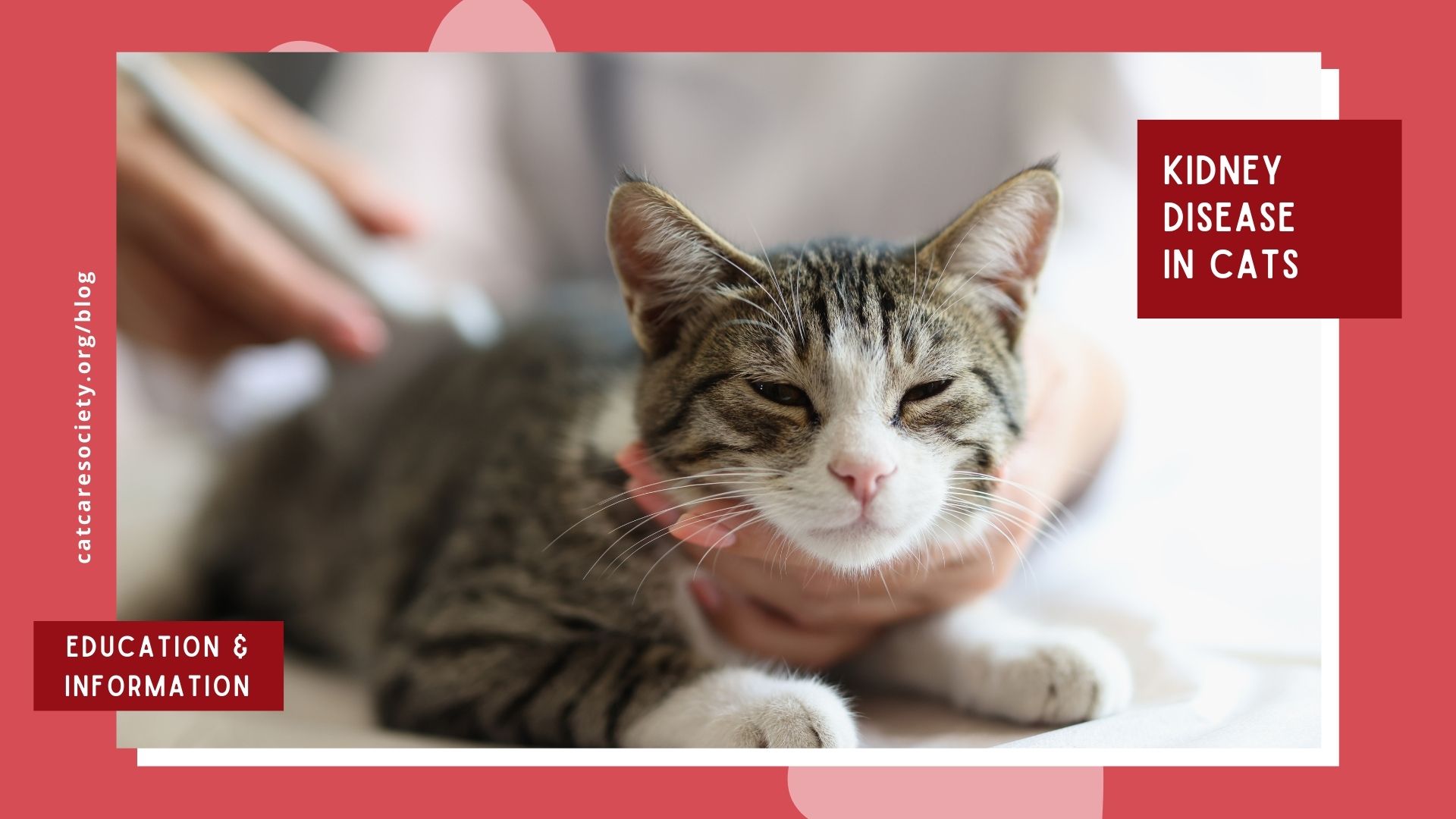
Kidney disease, also known as chronic kidney disease (CKD), affects a significant portion of aging cats. It’s estimated that CKD impacts 30-40% of cats over the age of 10 and 81% of cats over 15. While there is no cure for it, fortunately, early detection and proper management can significantly improve their quality of life. Here, we will explore the prevalence of kidney disease in cats, why it’s so common and ways it can be managed.
First, let’s distinguish between chronic kidney disease (CKD) and acute kidney injury (AKI). CKD develops gradually over time, and is a degenerative, progressive condition. AKI is a sudden and severe decline in kidney function, often triggered by specific events like toxins or infections. AKI requires immediate veterinary attention and involves a different treatment plan compared to cats with CKD.
Just like a water filter keeps your home’s water clean, healthy kidneys act as your cat’s internal filtration system. As they age, these filters can become less efficient, leading to a buildup of waste products in the bloodstream. Kidney disease progresses through four stages, each indicating the level of kidney function remaining. Early detection and proactive care are essential for supporting kidney health and preserving function for as long as possible.
While the exact reasons behind the high prevalence of CKD in cats are still being explored, here are some contributing factors:
Purebred cats tend to be more susceptible to CKD because of genetic components, but most all cats over the age of 10 will develop some extent of CKD.
The good news is that with early detection, managing kidney disease becomes significantly easier.
What signs should you watch for that may indicate kidney disease?
Having just one of the symptoms listed above doesn’t necessarily mean your cat has CKD. Your veterinarian will perform a comprehensive physical examination and run blood and urine tests to rule out other issues such as UTI, diabetes and crystalluria (crystals in urine made up of minerals and other substances that join together rather than staying dissolved). In some cases, an X-ray or ultrasound might also be necessary for a definitive diagnosis.
If your cat is diagnosed with CKD, your vet will be able to tell you how far along the condition has progressed within four stages:
“Usually, two-thirds of kidney function is gone by the time it shows up on bloodwork,” CCS’ Lead Vet Dr. Cecily Palamara said. “If we’re not seeing it, we know it doesn’t necessarily mean a cat doesn’t have it. Cats can compensate for it for a long time.”
You can learn more about the stages of CKD from the International Renal Interest Society. Blood work analysis is a crucial part of diagnosing kidney disease and tracking its progression. If you’d like more information on what blood work is necessary and what it means, check out the Cat Manny’s page on CKD.
While there’s no cure for kidney disease, there are several things you can do to help manage it and improve your cat’s quality of life:
Managing chronic kidney disease in shelter cats presents unique challenges compared to home settings, such as providing special diets and working with limited space and resources.
Dr. Palamara shared the approach she and her team take to support these cats. “We really have kind of a breadth of treatment and a very wide approach,” she said. “The main goal with the approach to our kidney cats is, how do we maintain and lengthen their quality of life for the time that they’re with us? How do we decrease the amount of time that they’re with us? And what’s their fastest path to adoption? That can mean different things for different cats.”
The shelter medical team focuses on addressing side effects, maximizing hydration, keeping the cats on canned food because it has a higher water content, and providing individualized treatment plans while working within the limits of the shelter environment. For cats who struggle to get enough water, they provide subcutaneous fluids. They put cats on special renal diets when needed, but they have to be mindful of space, because those cats need to live in a separate room away from the rest of the cats on a regular diet.
Mineral management in kidney cats is also important. If phosphorus gets too high, it can be very toxic to the kidneys. There is a special medication that can be added to food to help lower phosphorus, but many cats don’t like it. Kidney cats are also prone to low potassium, which can cause weakness, but supplementation can help.
The team uses a unique approach for cats with anemia associated with CKD. They administer a newer FDA-approved medication for anemia secondary to kidney disease in cats, and it has been very successful. It’s a more expensive treatment and is reserved for when anemia is affecting the cat’s quality of life.
Tailoring treatment to each cat’s individual needs helps them feel their best and thrive in their new homes after adoption.
Acute Kidney Injury (AKI), also known as acute renal failure, occurs when a cat’s kidneys abruptly lose their ability to function. This is a life-threatening condition that can lead to severe dehydration, rapid accumulation of waste products in the bloodstream, electrolyte imbalances and changes in blood acidity levels.
Common causes include:
The symptoms of AKI are similar to CKD and can also include vision loss, drooling and seizures. If your cat exhibits any of these signs, take them to the vet immediately.
Although CKD is a serious condition, with proper home management and veterinary care, many cats with CKD can lead happy and fulfilling lives for years. Numerous resources are available to support you in navigating your cat’s CKD journey. We recommend exploring VCA Animal Hospitals’ extensive articles on kidney health and cats for additional information. If you have any concerns about your cat’s health, including potential AKI, do not hesitate to discuss them with your veterinarian. You can find low-cost and emergency care options on our Resources page. Remember, early detection and consistent management can help your cat feel their best!
About the Author: Beth Dokolasa is a volunteer for Cat Care Society and served on the organization’s junior board. She is an instructional developer for Natural Grocers and lives in Indian Hills, Colo., with her husband, young daughter, and two cats, Techno and Digit.

With the role of our feline friends evolving over the years, we now have more information at our finger tips to help us make sure our cats are living their best life. Advancements in the treatment of our cats have provided a higher life expectancy for our furry family members. One topic of study that has contributed to these advancements is the benefit of keeping our cats indoors instead of letting them roam free outdoors.
There are three main aspects to consider regarding the benefits of your cats living indoors. These include your cat’s own safety, the safety of the area wildlife, as well as the positive impacts for cat owners themselves.
Our indoor cats are found to live 8-10 years longer than their outdoor counterpart. While many reasons contribute to these numbers, there are some standout threats to cats who are let outdoors. Many outdoor cats, ~5.4 million per year (Global stewards, 2024), are hit by cars. They are also wounded in fights with other animals, and injured or killed by varying birds of prey, dogs or coyotes.
When a cat goes roaming outdoors, they are also at risk of coming into contact with human-made dangers, such as ingesting household chemicals left outdoors, and even poisonous plants. They can get stuck in precarious places and are also known to get stuck up trees, and can even die from exposure or sudden storms.
Some humans present a risk to your cats as well, and while we all like to believe that all people love cats, some who do not may cause harm intentionally to your beloved feline.
“Free-roaming housecats present serious risks to public health and the environment” (Wildlife Center of Virginia, n.d.).
We’ve all referred to our cats as mini lions, tigers or panthers before, but did you know that our cats are in fact highly skilled predators responsible for the extinction of at least 33 species? Unfortunately, our outdoor cats have killed billions of birds in the U.S. per year alone (Global stewards, 2024).
The reasons that housecats are so skilled at being an outdoor predator vary. Because our cats are introduced to the outdoors by humans, the wildlife around them has not evolved to defend themselves from this particular kind of predator.
They also have large numbers on their side, as well as the physical fitness to overwhelm wildlife that doesn’t benefit from the luxuries of the housecat lifestyle. Even the mere presence of housecats outdoors affects the wildlife in your area due to wildlife not returning to their young to avoid directing the cats to their dens and nests.
Just because you may not see your housecat bringing home dead prey, does not mean they aren’t actively hunting, as the majority of their prey — 77% — is not brought home and is either eaten or left behind (Wildlife Center of Virginia (n.d.).
Your cat is part of your family, and having them live indoors with you allows a stronger bond to form between cat and human. This also provides opportunity for cat owners to identify when their cat may be experiencing illness or injury, whereas if the cat was outside most of the time, owners may miss certain cues that their furry friend requires veterinary attention.
Because outdoor cats are more prone to picking up disease or illness such as feline leukemia virus (FeLV) or feline immunodeficiency virus (FIV) among others, having them live indoors will also cut down on expensive and avoidable vet visits. Things like fleas and ticks can also be brought into your home when your cat is let outdoors.
Aside from the points above, cats sent to roam outdoors can routinely be humanely trapped by humans and euthanized or adopted out to a new home. In these cases, unfortunately only “3% of cats turned into shelters make it back to their owners” (Global stewards, 2024).
Many of our cats seem so interested in what’s beyond the walls of our home, and may very well enjoy being out and about in nature. Just because letting them roam outside presents dire risks for them, does not mean there aren’t things you can do to help them lead an enriched life involving the outdoors.
Supervised outdoor visits can allow this type of enrichment, and we have many options today to accomplish this, from pet strollers to pet play pens and even leash training, which can also work for cats. Advancements such as the catio (a word combination of cat and patio) is an outdoor enclosure option for cats. These catios “provide cats with mental stimulation, help combat obesity by encouraging cats to play more often than they would indoors — which also provides you with some peace of mind, and will offer a way for your pets to spend quality time outdoors without the worry of predators and other dangers they might encounter” (thecatiolife.com, 2021).
In lieu of the outdoors, consider things like toys, secured screened windows and resting perches for your cat to allow for stimulation and exercise where you won’t have to worry about their safety. Even the mere sounds and smells of the outdoors are enjoyable for your cat.
Keeping our cats indoors together can contribute to their happiness and yours, along with the overall wildlife benefits. So, the next time your cat gives you the meow that indicates they want to launch out the door to “freedom,” remember you are doing what is best for your cat by denying their request and keeping them safe.
About the Author: E.R. is a Lakewood local who has volunteered for Cat Care Society since 2016. She grew up with cats and has been a friend to them all her life. She has participated in TNR for several years, and greatly enjoys her state’s commitment to preserving nature. E.R. has one fur baby who is obsessed with wand toys and enjoys watching the rabbits in their backyard.
Copyright © 2024 Cat Care Society. All Rights Reserved. | Privacy Policy
The Cat Care Society is a non-profit 501(c)(3) organization. Our tax identification number is 84-0869447.